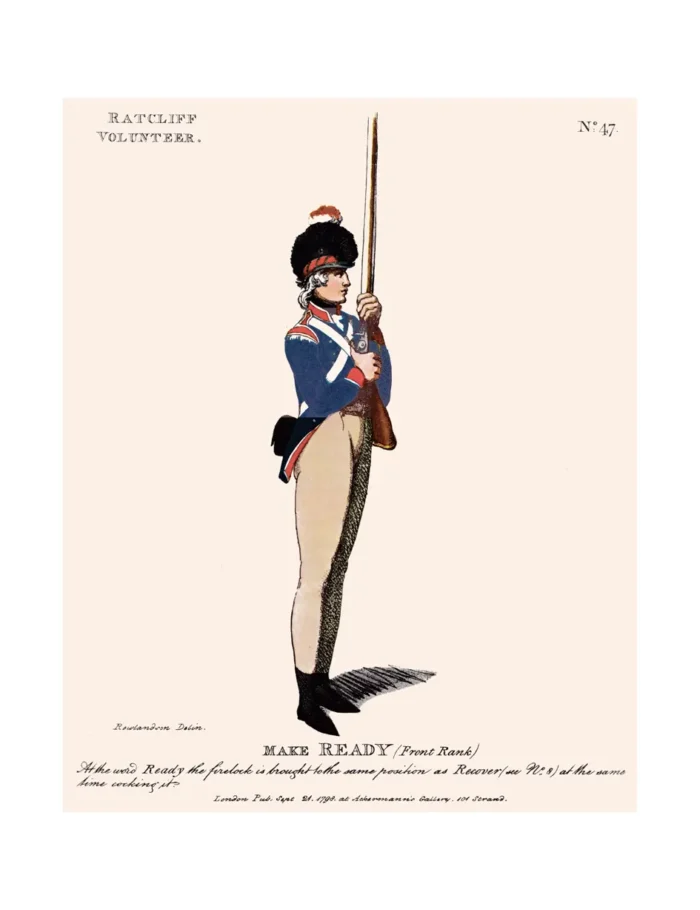No. 47 Ratcliff Volunteer
£12.50
Ratcliff (in Tower Hamlets) (scroll down for a more detailed Description)
The first reprints of the 1798 aquatints by Thomas Rowlandson (published by Rudolph Ackermann) published in 1972 by Hugh Evelyn Limited.
Image size is 20.5 x 25.5 cm [8” x 10”] against a light greyish orange background (c. RGB fcf2e1) impressed on medium high white matt cartridge paper of c. 120 g/m2.
Print size: c. 26.2 x 33.7 cm [17” x 12 ¾”] may vary slightly from printers’ cut 50 years ago
Details of London Wards and Parishes provided by © the British Library
We offer thanks to the Trustees of the British Library and British Museum and Wikipedia for some text (and map outlines
Print is STANDARD size – shipping is the same for 1 to 10 prints (based on largest print size in your order) – see Shipping & Returns
Who were the Loyal Volunteers ? See here
In stock
Description
Ratcliff or Ratcliffe is a locality in the London Borough of Tower Hamlets. (See map). It lies on the north bank of the River Thames between Limehouse (to the east), and Shadwell (to the west). The place name is no longer commonly used. Ratcliffe in earlier times was also known as “sailor town”. It was originally known for shipbuilding but from the fourteenth century more for fitting and provisioning ships. In the sixteenth century various voyages of discovery were supplied and departed from Ratcliffe, including those of Willoughby and Frobisher. By the early seventeenth century it had the largest population of any Hamlet (administrative sub-division) in Stepney, with 3500 residents. It was again a site of shipbuilding in the seventeenth century – a number of sailing warships were built for the Royal Navy here, including one of the earliest frigates, the Constant Warwick in 1645. Located at the western end of Narrow Street it was made up of lodging houses, bars, brothels, music halls and opium dens. This overcrowded and squalid district acquired an unsavoury reputation with a large transient population. In 1794 approximately half of the hamlet was destroyed in a fire but, even so, it continued as a notorious slum well into the nineteenth century. From the late sixteenth century Ratcliffe and surrounding areas were notable areas for non-conformistChristianity. John Penry preached in the area in 1592/3, until he was spotted by the local vicar at Ratcliffe and subsequently hanged. By 1669 around 200 Presbyterians were worshipping at a warehouse at Ratcliffe Cross and there was a purpose built Quaker meeting house in Schoolhouse Lane, which was demolished by soldiers in 1670.
Additional information
| Weight | 0.0121 kg |
|---|---|
| Dimensions | 25 × 35 cm |






